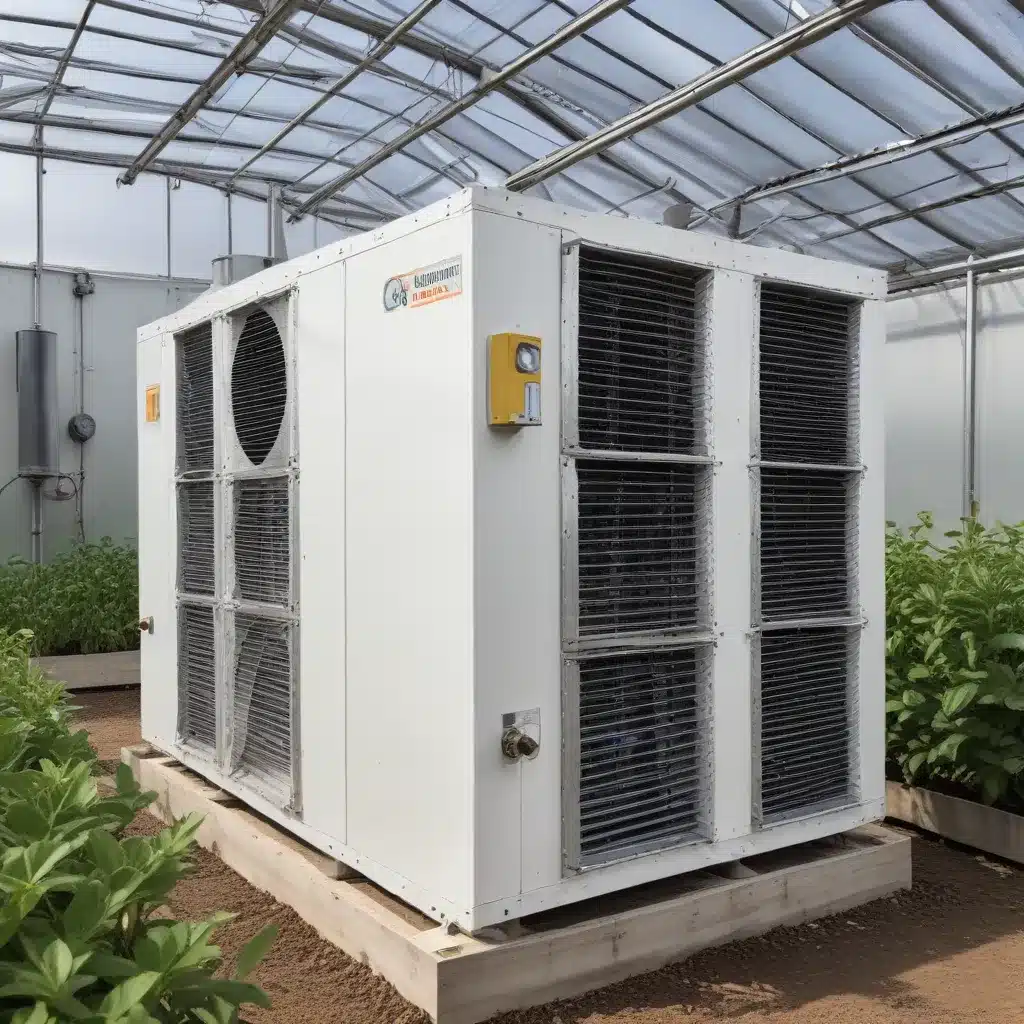
The Role of Air-Cooled Heat Exchangers in Optimizing Urban Agriculture
As the global population continues to rise and food security becomes an ever-pressing concern, the development of sustainable and efficient agricultural practices has taken center stage. One promising solution lies in the integration of urban greenhouses and controlled environment agriculture (CEA) facilities, which leverage advanced technologies to cultivate crops year-round, even in challenging climates. At the heart of this innovation are air-cooled heat exchangers – versatile and energy-efficient thermal management systems that play a crucial role in maintaining optimal growing conditions while minimizing environmental impact.
Overcoming the Challenges of Hot and Arid Climates
In regions with hot and arid climates, the successful cultivation of high-yield crops within greenhouses and CEA facilities poses a significant challenge. Maintaining the ideal temperature, humidity, and ventilation levels required for healthy plant growth can be an energy-intensive and resource-draining endeavor. Conventional cooling systems, such as air conditioning units or evaporative coolers, often fall short, consuming large amounts of electricity or water, which can be scarce in many urban environments.
The Advantages of Air-Cooled Heat Exchangers
Air-cooled heat exchangers offer a more sustainable solution, leveraging the principles of heat transfer to efficiently regulate the indoor climate of greenhouses and CEA facilities. These systems work by exchanging heat between the warm, moist air inside the growing environment and the cooler outside air, without the need for water-intensive evaporative processes or energy-intensive refrigeration. By effectively managing the temperature and humidity levels, air-cooled heat exchangers can significantly reduce the overall energy and water consumption of urban agricultural operations, making them a crucial component of the sustainable food production revolution.
Unlocking the Full Potential of Air-Cooled Heat Exchangers
To fully harness the benefits of air-cooled heat exchangers in urban greenhouses and CEA, it is essential to understand the intricacies of their design, engineering, and optimization. This comprehensive article delves into the latest research and industry insights, providing practical guidance on how to unlock the true potential of these versatile systems.
Optimizing Design and Engineering for Maximum Efficiency
The design of an air-cooled heat exchanger is a delicate balance, requiring careful consideration of factors such as air and fluid flow, heat transfer coefficients, and material selection. By leveraging computational fluid dynamics (CFD) simulations and advanced modeling techniques, engineers can fine-tune the exchanger’s geometry, fin configuration, and materials to achieve the highest possible thermal efficiency, all while minimizing pressure drops and energy consumption.
Example: A recent study published in the Frontiers in Sustainable Food Systems journal investigated the use of air-cooled heat exchangers in greenhouses located in arid regions. The researchers developed a detailed computational model to optimize the exchanger’s design, taking into account the local climate conditions, crop water requirements, and energy constraints. Their findings demonstrated that by carefully tuning the heat exchanger’s geometry and materials, the cooling capacity could be increased by up to 25% while reducing energy consumption by 15%.
Maintaining Peak Performance through Proactive Maintenance
Ensuring the long-term reliability and efficiency of air-cooled heat exchangers requires a comprehensive maintenance program. Regular inspections, cleaning, and preventive measures can help mitigate the effects of fouling, corrosion, and other operational challenges that can degrade the exchanger’s performance over time. By staying proactive with maintenance, greenhouse and CEA operators can maximize the lifespan of their air-cooled systems and maintain the optimal indoor climate for their crops.
Example: A case study published in the MDPI Agronomy journal highlighted the importance of maintenance for air-cooled heat exchangers used in greenhouses located in hot and arid climates. The researchers analyzed the impact of regular cleaning and inspection routines, finding that a well-maintained system could maintain up to 90% of its original cooling capacity, compared to a 30% reduction in performance for neglected units. This underscores the critical role of proactive maintenance in ensuring the long-term viability of air-cooled heat exchangers in urban agriculture applications.
Integrating Air-Cooled Heat Exchangers into Comprehensive Climate Control Strategies
While air-cooled heat exchangers are highly effective at regulating temperature and humidity, they are often most successful when integrated into a broader climate control strategy for greenhouses and CEA facilities. By combining these systems with other technologies, such as ventilation, evaporative cooling, and dehumidification, operators can create a comprehensive, energy-efficient solution that addresses the full spectrum of environmental requirements for optimal crop growth.
Example: A study published in the Nature Scientific Reports journal explored the integration of air-cooled heat exchangers with an earth-to-air heat exchanger (EAHE) system in a greenhouse located in an arid region of Egypt. The researchers found that by leveraging the stable underground temperatures and the air-cooling capabilities of the heat exchangers, they were able to maintain the desired greenhouse climate while reducing the overall energy consumption by up to 35% compared to a standalone air-conditioning system.
Unlocking the Potential of Air-Cooled Heat Exchangers in Urban Greenhouses and CEA
By optimizing the design, engineering, and maintenance of air-cooled heat exchangers, and integrating them into comprehensive climate control strategies, urban greenhouse and CEA operators can unlock a new era of sustainable, energy-efficient, and water-conscious food production. These versatile systems offer a compelling solution to the challenges of cultivating high-yield crops in hot and arid climates, positioning them as a vital component of the future of urban agriculture.
To learn more about how air-cooled heat exchangers can transform your urban greenhouse or CEA facility, be sure to visit our website for additional resources and expert guidance.

